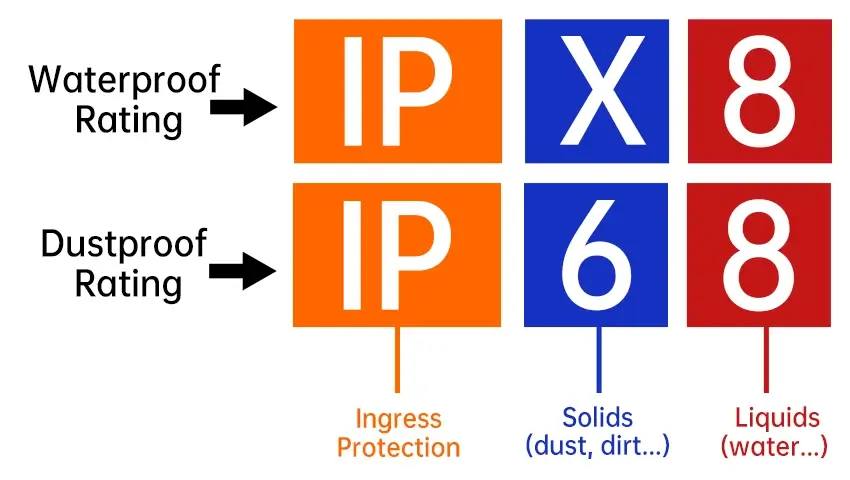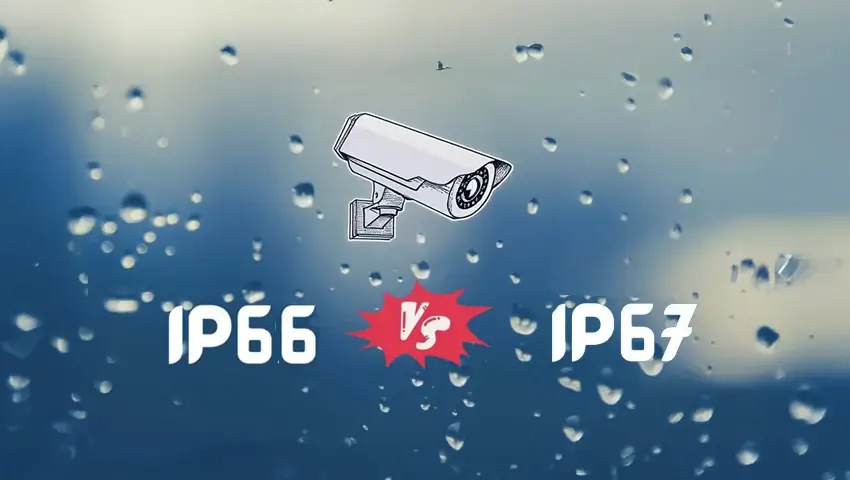In an era where technology is integrated into nearly every aspect of our lives, understanding how well your devices can withstand environmental challenges is essential. This is where Ingress Protection (IP) ratings come into play. These ratings provide valuable insights into a device’s resistance to dust and water, which can significantly impact performance and durability. Among these ratings, IPX8 and IP68 are two of the most commonly encountered. This article aims to clarify the distinctions between these two ratings and guide you in choosing the right device for your needs.
Contents
What is IPX8?
The IPX8 rating specifically denotes a device’s water resistance. The “X” indicates that the device has not been tested for dust protection, which means we cannot guarantee its effectiveness in dusty environments. Devices rated IPX8 are generally tested by submerging them in water beyond one meter for prolonged periods—often up to 30 minutes or more. This makes IPX8-rated devices suitable for activities like swimming or using in the rain.
Common examples of devices that typically carry the IPX8 rating include high-end smartphones designed for active users, smartwatches, and certain fitness trackers. However, it’s essential to recognize that while these devices can handle significant water exposure, their performance may not hold up well in dusty conditions.
What is IP68?
In contrast, the IP68 rating provides more comprehensive protection. The “68” signifies that the device is both dust-tight (the “6”) and capable of withstanding continuous immersion in water (the “8”). This means that IP68-rated devices are not only protected from dust ingress but can also be submerged in water deeper than one meter for extended durations, often at least 30 minutes.
Devices with an IP68 rating are commonly found in flagship smartphones, rugged tablets, and other electronic equipment designed for challenging environments. This rating assures consumers that their devices are built to endure harsh conditions, making them suitable for outdoor adventures and industrial applications.
Key Differences Between IPX8 and IP68
1. Water Resistance
The primary distinction between IPX8 and IP68 lies in their water resistance testing conditions. Both ratings indicate high levels of water resistance, but IPX8 does not offer any guarantees regarding dust protection, while IP68 ensures it. Thus, an IPX8 device is safe for water exposure but may not perform well in dusty environments.
2. Dust Resistance
IPX8 devices have not undergone testing for dust ingress, meaning they may be vulnerable to dust particles. On the other hand, IP68 devices are completely dust-tight, providing full protection against any dust ingress, which is particularly essential for devices used in rugged or outdoor conditions.
3. Real-World Applications
When it comes to practical applications, IP68 devices are generally more versatile. They are ideal for situations where both dust and water exposure are prevalent, such as construction sites or during outdoor activities. Conversely, IPX8-rated devices are more suitable for scenarios focused on water exposure, like swimming or showering.
Choosing Between IPX8 and IP68
When selecting devices based on IP ratings, it’s crucial to consider your lifestyle and specific use cases. If you frequently operate in dusty or rugged conditions, opting for an IP68-rated device will offer you greater protection. However, if your primary concern is water resistance for activities such as swimming, an IPX8-rated device should meet your needs.
Factors to Consider
- Usage Environment: Assess where you’ll be using the device most frequently. If it’s in a clean, water-heavy environment, IPX8 may suffice. For harsher, dustier conditions, go for IP68.
- Device Purpose: Think about what you will use the device for. If you’re an outdoor enthusiast or work in construction, IP68 is the better choice.
- Budget: Generally, IP68 devices may come at a premium due to their enhanced protection. Determine if the added cost aligns with your needs.
FAQs
1. Can an IP68 device be used for swimming?
Yes, IP68 devices can typically be used for swimming, but always refer to the manufacturer’s guidelines for specific recommendations regarding water activities.
2. Are all IPX8 devices waterproof?
While IPX8 devices can withstand significant water exposure, they are not entirely waterproof in every scenario, especially if they have not been tested for dust protection.
3. What does the ‘X’ in IPX8 mean?
The ‘X’ indicates that the device has not been tested for dust protection, meaning it may be susceptible to dust particles.
Conclusion
Understanding the differences between IPX8 and IP68 ratings is essential for making informed decisions when purchasing devices. While both ratings provide high levels of water resistance, IP68 offers the added assurance of dust protection. Depending on your lifestyle, usage scenarios, and budget, knowing these distinctions can help you choose the right device that meets your needs for durability and reliability. Whether you’re looking for a device for swimming or one that can handle rugged outdoor conditions, being informed will lead you to the best choice for your electronic device.

